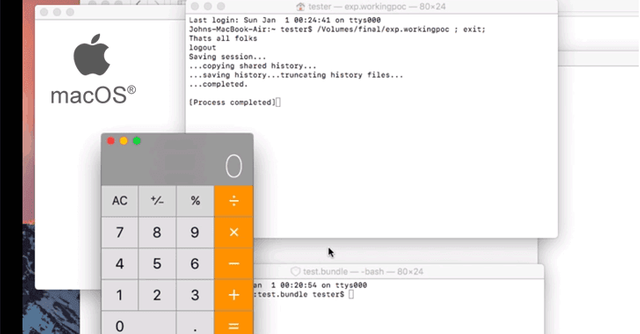
Earlier this week Dropbox team unveiled details of three critical vulnerabilities in Apple macOS operating system, which altogether could allow a remote attacker to execute malicious code on a targeted Mac computer just by convincing a victim into visiting a malicious web page.
The reported vulnerabilities were originally discovered by Syndis, a cybersecurity firm hired by Dropbox to conduct simulated penetration testing attacks as Red Team on the company's IT infrastructure, including Apple software used by Dropbox.
The vulnerabilities were discovered and disclosed to Apple security team in February this year, which were then patched by Apple just over one month later with the release of its March security updates. DropBox applauded Apple for its quick response to its bug report.
According to DropBox, the vulnerabilities discovered by Syndis didn't just affect its macOS fleet, but also affected all Safari users running the latest version of the web browser and operating system at the time.
Here's the list of the three reported (then-zero-day) vulnerabilities:
- The first flaw (CVE-2017-13890) that resided in CoreTypes component of macOS allowed Safari web browser to automatically download and mount a disk image on visitors’ system through a maliciously crafted web page.
- The second flaw (CVE-2018-4176) resided in the way Disk Images handled .bundle files, which are applications packaged as directories. Exploiting the flaw could have allowed an attacker to launch a malicious application from mounted disk using a bootable volume utility called bless and its --openfolder argument.
- The third vulnerability (CVE-2018-4175) involved a bypass of macOS Gatekeeper anti-malware, allowing a maliciously crafted application to bypass code signing enforcement and execute a modified version of Terminal app leading to arbitrary commands execution.
As shown in the proof-of-concept video demonstration, the researchers were able to create a two-stage attack by chaining together all the three vulnerabilities to take control of a Mac computer just by convincing a victim into visiting a malicious web page with Safari.
"The first stage includes a modified version of the Terminal app, which is registered as a handler for a new file extension (.workingpoc). In addition, it would contain a blank folder called "test.bundle" which would be set as the default "openfolder" which automatically would open /Applications/Terminal.app without prompt," DropBox says in its blog post.
"The second stage includes an unsigned shellscript with the extension ".workingpoc" which is then executed within the running Terminal application without prompt."
Apple released security updates on March 29 that included the security fixes for the three vulnerabilities. So, you just need to make sure that you install all monthly security updates regularly in order to protect your systems against any threat.
Link to Original Article: https://hackhex.com/computer/opening-a-site-in-safari-could-have-hacked-your-macos-525.html